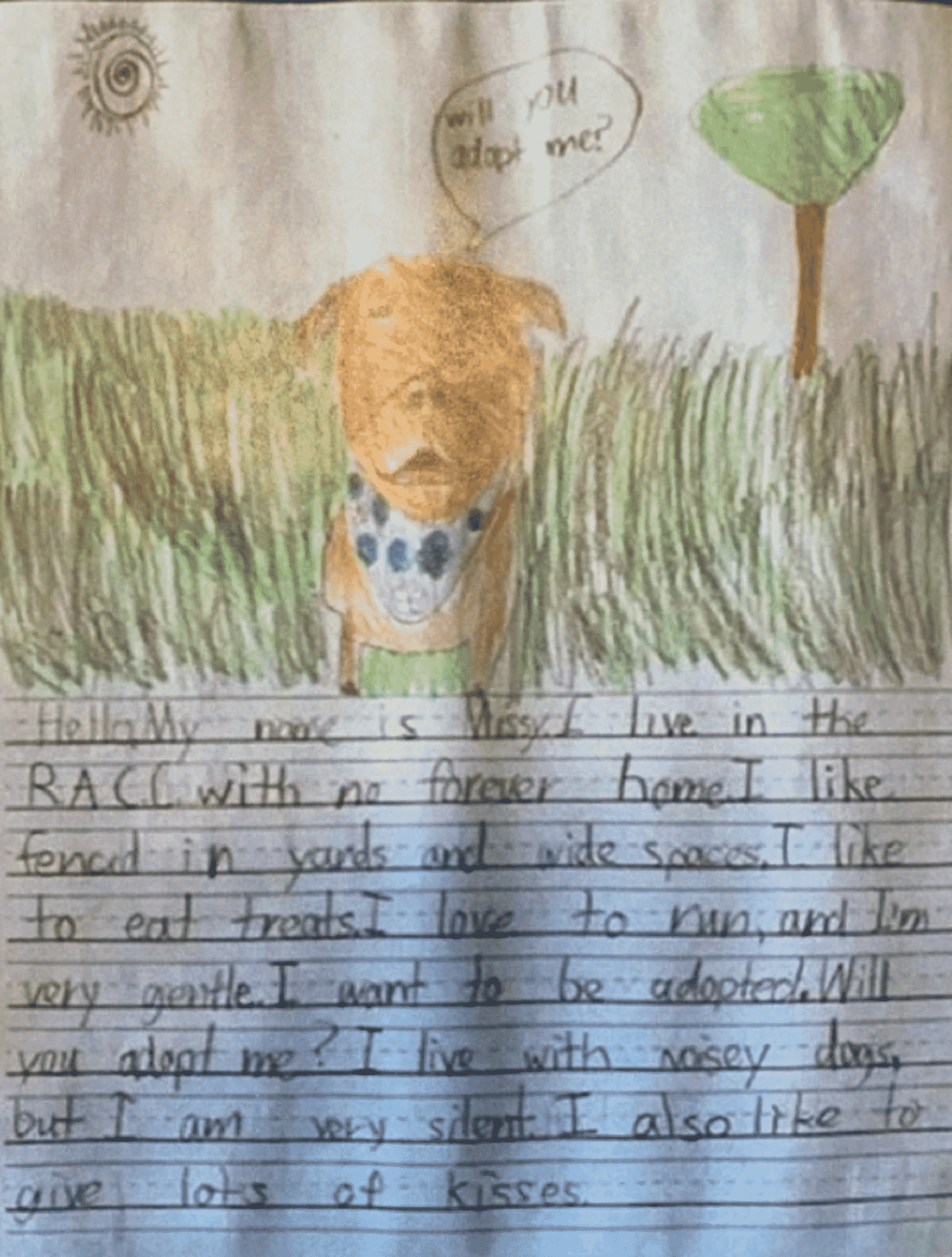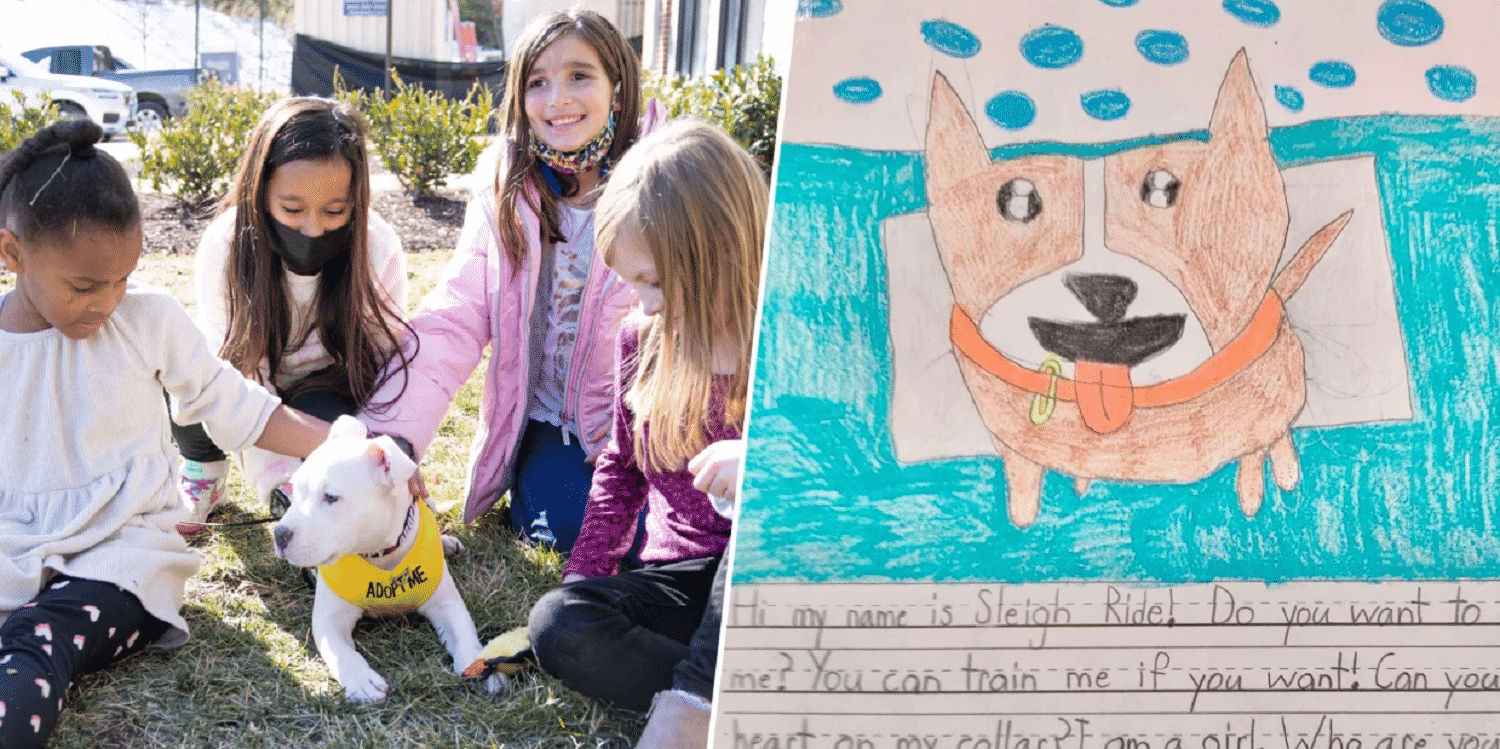
Kensey Jones, a second-grade teacher and animal shelter volunteer, always ensures her work is purposeful, meaningful, and intentional. The 42-year-old St. Michael’s Episcopal School educator in Richmond, West Virginia, was contemplating the best way to execute her persuasive writing activity for her students. Then, she thought of a brilliant idea.
Miss Jones visited Richmond Animal Care and Control (RACC), an animal organization where she volunteers. She decided to collaborate with its shelter director, Christie Peters, who was also one of her students’ parents. She proposed that her students write persuasive letters inviting readers to adopt the shelter animals.
Miss Peters loved the idea, and they both agreed it would be best for the students to write for the animals less likely to get adopted, namely the seniors with health issues and specific requirements.

Before executing the persuasive writing assignment, Miss Jones introduced an introductory activity. To make it more alive and relevant to the students, Miss Jones invited Miss Peters to class to discuss the RACC shelter and its operation. She also brought Snow, a shelter puppy; the children enjoyed playing and interacting with him.
Miss Jones also sat down with the class to discuss each animal and described their personalities before assigning one per student. It was an excellent way to excite and engage the second graders before they began writing convincing and heartfelt persuasive essays.
Miss Jones’s students were assigned 23 dogs and one cat. Each student began to work on their essays and accompanied their work with a drawing they made.
The persuasive letters were a great success. It increased the adoption speed, which was terrific, considering that potential adopters used to ignore the featured dogs at the shelter. Each time a dog gets adopted, Miss Jones updates the class about it. Eventually, the interested readers adopted nearly all the shelter animals, thanks to the practical writing skills and the natural persuasive power of children.
The students also genuinely enjoyed the entire writing process. The essays revealed how the students succeeded by first knowing and connecting with the animals. One of the children, seven-year-old Parker Witthoeft, wrote an article for a dog named Missy, and he secretly wanted his own family to adopt her. Though Missy didn’t end up with him, he was pleased to hear that his assigned dog was one of the first to get adopted.
Parker’s mother, Jacklyn Witthoeft, shared that writing didn’t interest her son. However, the persuasive essay task impacted her son, as she saw how he felt deeply connected with the writing activity.

Another student wrote the essay using the first-person point of view. She noted that the dog, named Gail, wanted a home. Gail’s life at the shelter was okay, but she also wanted to experience having her dog bed, toys, and a big yard. The student also remembered to write about Gail’s specific requirement – that it would be best for her to be the only pet in her forever home.
Chrissie Peters hopes that shelters nationwide would consider similar partnerships with their local schools. She says it’s a win-win situation since it requires no extra funding for marketing to make it happen. The children, in turn, benefit from learning and feeling a sense of accomplishment by being active community members achieving a school requirement.

Kensey Jones’ dream is for other schools to pick up on the idea, hoping to help shelter animals find their permanent homes faster. As an educator and animal advocate, her biggest aspiration is for her students to know they can make a difference no matter how young they are, as long as they put their minds to their dreams and advocacies.

Watch the inspiring video here:
Source: Good Morning America via YouTube


